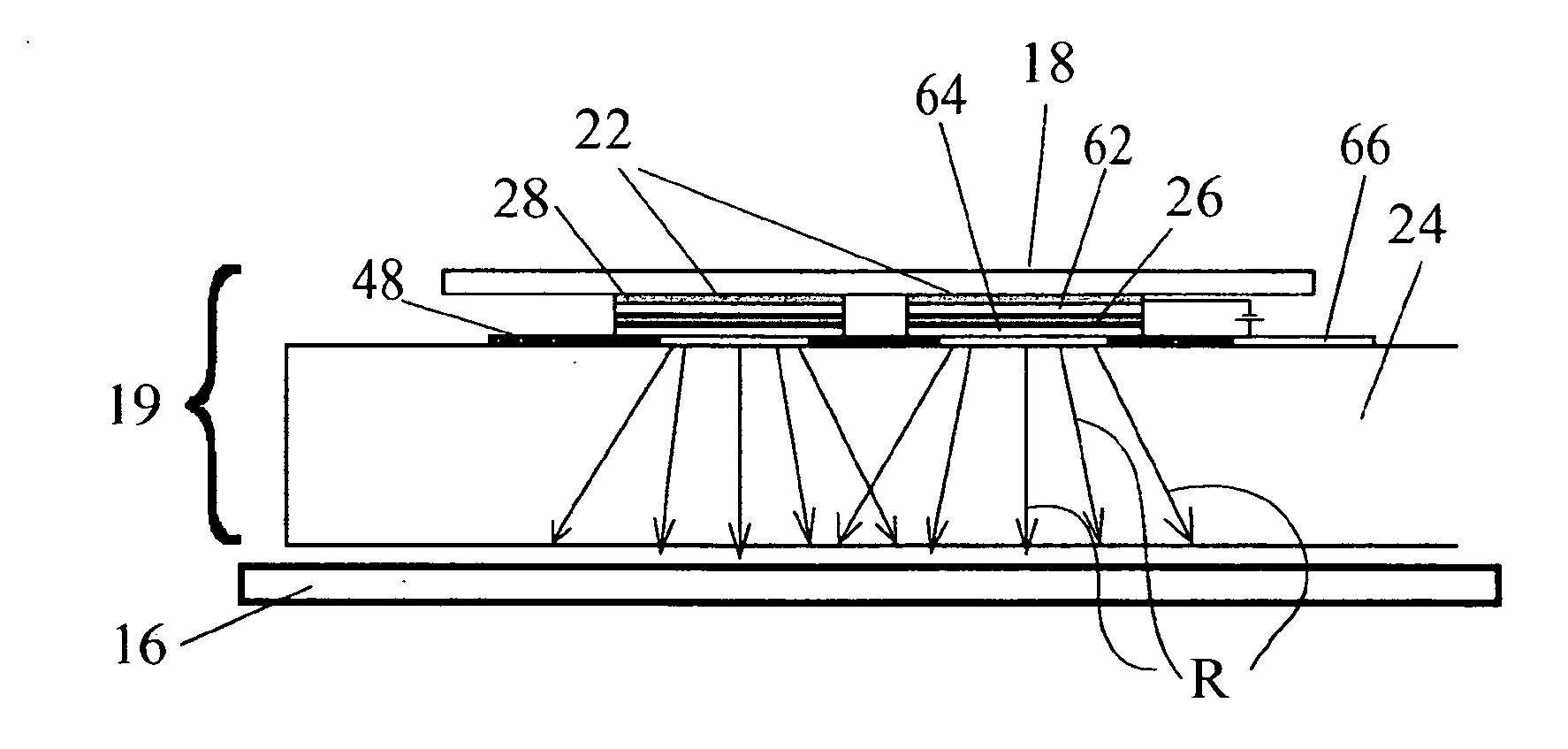Printer using direct-coupled emissive array
a printing device and photoemissive array technology, applied in printing, electrical equipment, semiconductor devices, etc., can solve the problems of limited resolution, large volume of crt imaging devices, limited resolution, etc., and achieve high light efficiency, good sharpness and contrast
- Summary
- Abstract
- Description
- Claims
- Application Information
AI Technical Summary
Benefits of technology
Problems solved by technology
Method used
Image
Examples
Embodiment Construction
[0036] The present description is directed in particular to elements forming part of, or cooperating more directly with, apparatus in accordance with the invention. It is to be understood that elements not specifically shown or described may take various forms well known to those skilled in the art.
[0037] Photoemissive area arrays adaptable for printing applications can be constructed from a variety of materials. The preferred embodiment in the present invention makes use of organic light emitting diode (OLED) arrays, using organic electroluminscence technology. The light emitting material itself may be characterized as being of the small-molecule kind or of the polymer kind. In some of the current literature, small-molecule organic electroluminescent devices are labeled as “OLED” devices and distinguished from polymer organic electroluminescent devices, labeled “PLED” devices. For the purposes of this application, however, all of these classes of organic electroluminescent devices...
PUM
 Login to View More
Login to View More Abstract
Description
Claims
Application Information
 Login to View More
Login to View More - R&D
- Intellectual Property
- Life Sciences
- Materials
- Tech Scout
- Unparalleled Data Quality
- Higher Quality Content
- 60% Fewer Hallucinations
Browse by: Latest US Patents, China's latest patents, Technical Efficacy Thesaurus, Application Domain, Technology Topic, Popular Technical Reports.
© 2025 PatSnap. All rights reserved.Legal|Privacy policy|Modern Slavery Act Transparency Statement|Sitemap|About US| Contact US: help@patsnap.com



